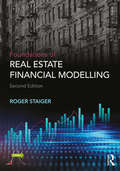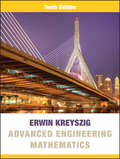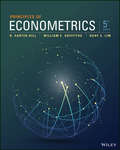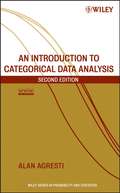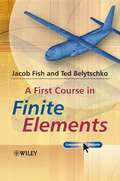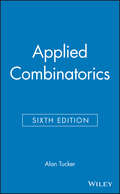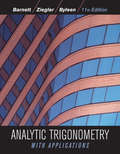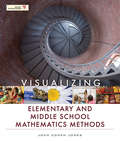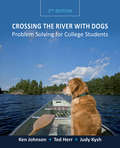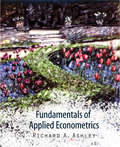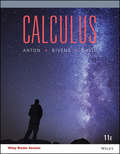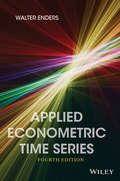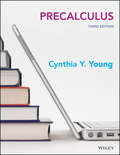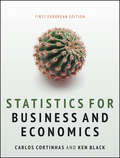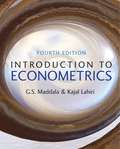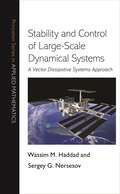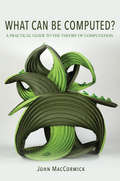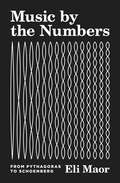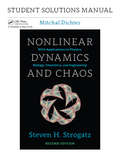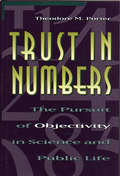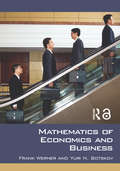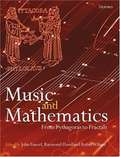- Table View
- List View
Foundations of Real Estate Financial Modelling
by Roger StaigerFoundations of Real Estate Financial Modelling, Second Edition is specifically designed to provide the scalable basis of pro forma modelling for real estate projects. The book introduces students and professionals to the basics of real estate finance theory prior to providing a step-by-step guide for financial real estate model construction using Excel. The book introduces an innovative new financial metric, P(Gain), which quantifies the probability of a Return of Capital and answers the most basic question for investing, "What is the probability I get my money back?".? This new second edition has been fully revised and expanded. The book is separated into three functional units: (1) Real Estate Valuation Basics, Theory and Skills, (2) Real Estate Pro Forma Modelling, (3) Real Estate Pro Forma (Enhancements). New and enhanced Chapters cover:? Interest rates Amortization Single- and multi-family unit Development module Rent roll module Waterfall (equity bifurcation) Hotel, retail/office and townhouse. ? In addition, this new edition includes problem sets and solutions at the end of each chapter as well as case studies underpinning the chapter topics. Further chapters are dedicated to risk quantification and include scenario, stochastic and Monte Carlo simulations, equity waterfalls, and adding U.S. GAAP financial statements to existing real estate pro forma models. This book is the ideal textbook for a Real Estate Finance class, providing the theoretical basis of real estate finance as well as valuable modelling skills for the workplace. This book provides individuals with a step-by-step instruction on how to construct a real estate financial model starting with a new spreadsheet. The resultant model is portable, scalable, and modular. A companion website provides the pro forma models to readers as a reference for their own constructed models.
Advanced Engineering Mathematics
by Erwin KreyszigThis market-leading text is known for its comprehensive coverage, careful and correct mathematics, outstanding exercises, and self contained subject matter parts for maximum flexibility. The new edition continues with the tradition of providing instructors and students with a comprehensive and up-to-date resource for teaching and learning engineering mathematics, that is, applied mathematics for engineers and physicists, mathematicians and computer scientists, as well as members of other disciplines.
Principles of Econometrics
by R. Carter Hill William E. Griffiths Guay C. LimPrinciples of Econometrics, Fifth Edition, is an introductory book for undergraduate students in economics and finance, as well as first-year graduate students in a variety of fields that include economics, finance, accounting, marketing, public policy, sociology, law, and political science. Students will gain a working knowledge of basic econometrics so they can apply modeling, estimation, inference, and forecasting techniques when working with real-world economic problems. Readers will also gain an understanding of econometrics that allows them to critically evaluate the results of others’ economic research and modeling, and that will serve as a foundation for further study of the field. This new edition of the highly-regarded econometrics text includes major revisions that both reorganize the content and present students with plentiful opportunities to practice what they have read in the form of chapter-end exercises.
An Introduction to Categorical Data Analysis (Wiley Series in Probability and Statistics #423)
by Alan AgrestiPraise for the First Edition "This is a superb text from which to teach categorical data analysis, at a variety of levels. . . [t]his book can be very highly recommended." —Short Book Reviews "Of great interest to potential readers is the variety of fields that are represented in the examples: health care, financial, government, product marketing, and sports, to name a few." —Journal of Quality Technology "Alan Agresti has written another brilliant account of the analysis of categorical data." —The Statistician The use of statistical methods for categorical data is ever increasing in today's world. An Introduction to Categorical Data Analysis, Second Edition provides an applied introduction to the most important methods for analyzing categorical data. This new edition summarizes methods that have long played a prominent role in data analysis, such as chi-squared tests, and also places special emphasis on logistic regression and other modeling techniques for univariate and correlated multivariate categorical responses. This Second Edition features: Two new chapters on the methods for clustered data, with an emphasis on generalized estimating equations (GEE) and random effects models A unified perspective based on generalized linear models An emphasis on logistic regression modeling An appendix that demonstrates the use of SAS(r) for all methods An entertaining historical perspective on the development of the methods Specialized methods for ordinal data, small samples, multicategory data, and matched pairs More than 100 analyses of real data sets and nearly 300 exercises Written in an applied, nontechnical style, the book illustrates methods using a wide variety of real data, including medical clinical trials, drug use by teenagers, basketball shooting, horseshoe crab mating, environmental opinions, correlates of happiness, and much more. An Introduction to Categorical Data Analysis, Second Edition is an invaluable tool for social, behavioral, and biomedical scientists, as well as researchers in public health, marketing, education, biological and agricultural sciences, and industrial quality control.
A First Course in Finite Elements
by Jacob Fish Ted Belytschkoeloped from the authors, combined total of 50 years undergraduate and graduate teaching experience, this book presents the finite element method formulated as a general-purpose numerical procedure for solving engineering problems governed by partial differential equations. Focusing on the formulation and application of the finite element method through the integration of finite element theory, code development, and software application, the book is both introductory and self-contained, as well as being a hands-on experience for any student. This authoritative text on Finite Elements: Adopts a generic approach to the subject, and is not application specific In conjunction with a web-based chapter, it integrates code development, theory, and application in one book Provides an accompanying Web site that includes ABAQUS Student Edition, Matlab data and programs, and instructor resources Contains a comprehensive set of homework problems at the end of each chapter Produces a practical, meaningful course for both lecturers, planning a finite element module, and for students using the text in private study. Accompanied by a book companion website housing supplementary material that can be found at http://www.wileyeurope.com/college/Fish A First Course in Finite Elements is the ideal practical introductory course for junior and senior undergraduate students from a variety of science and engineering disciplines. The accompanying advanced topics at the end of each chapter also make it suitable for courses at graduate level, as well as for practitioners who need to attain or refresh their knowledge of finite elements through private study.
Applied Combinatorics
by Alan TuckerThe new 6th edition of Applied Combinatorics builds on the previous editions with more in depth analysis of computer systems in order to help develop proficiency in basic discrete math problem solving. As one of the most widely used books in combinatorial problems, this edition explains how to reason and model combinatorically while stressing the systematic analysis of different possibilities, exploration of the logical structure of a problem, and ingenuity. Although important uses of combinatorics in computer science, operations research, and finite probability are mentioned, these applications are often used solely for motivation. Numerical examples involving the same concepts use more interesting settings such as poker probabilities or logical games.
Analytic Trigonometry with Applications
by Raymond A. Barnett Michael R. Ziegler Karl E. ByleenBarnett, Analytic Trigonometry is a text that students can actually read, understand, and apply. Concept development moves from the concrete to abstract to engage the student. Almost every concept is illustrated by an example followed by a matching problem allowing students to practice knowledge precisely when they acquire it. To gain student interest quickly, the text moves directly into trigonometric concepts and applications and reviews essential material from prerequisite courses only as needed. Extensive chapter review summaries, chapter and cumulative review exercises with answers keyed to the corresponding text sections, effective use of color comments and annotations, and prominent displays of important material all help the student master the subject. Analytic Trigonometry 11th edition includes updated applications from a range of different fields to convince all students that trigonometry is really useful.
Visualizing Elementary and Middle School Mathematics Methods (Visualizing Series)
by Joan Cohen JonesThe goal of Visualizing Elementary and Middle School Mathematics Methods is to teach mathematics in a way that excites and motivates readers, with an accessible format that serves as an introduction to the teaching of mathematics. This text, in partnership with National Geographic, is designed to present mathematics content and pedagogy in a fresh new way. This unique approach, while maintaining necessary rigor, provides the opportunity to set aside previous beliefs about mathematics and to learn concepts and pedagogy from a new perspective. The structure of Visualizing Elementary and Middle School Mathematics Methods is similar to the format of other methods texts, however, it has many unique features that are designed to be engaging and make the text relevant for readers. It begins with a brief summary of the history of mathematics. Diversity is integrated into the content of every chapter, through Multicultural Perspectives in Mathematics. Several chapters include Virtual Classroom Observation Videos.
Crossing the River with Dogs: Problem Solving for College Students
by Judy Kysh Ken Johnson Ted HerrCrossing the River with Dogs: Problem Solving for College Students, 2nd edition promotes the philosophy that students learn best by working in groups and the skills required for real workplace problem solving are those skills of collaboration. The text aims to improve students writing, oral communication, and collaboration skills while teaching mathematical problem-solving strategies. Focusing entirely on problem solving and using issues relevant to college students for examples, the authors continue their approach of explaining classic as well as non-traditional strategies through dialogs among fictitious students. This text is appropriate for a problem solving, quantitative reasoning, liberal arts mathematics, mathematics for elementary teachers, or developmental mathematics course.
Fundamentals of Applied Econometrics
by Richard A. AshleyFundamentals of Applied Econometrics is designed for an applied, undergraduate econometrics course providing students with an understanding of the most fundamental econometric ideas and tools. The text serves both the student whose interest is in understanding how one can use sample data to illuminate economic theory and the student who wants and needs a solid intellectual foundation on which to build practical experiential expertise. Divided into two parts, the first half provides a thorough undergraduate-level treatment of multiple regressions including an extensive statistics review with integrated, hands-on Acting Learning Exercises so students learn by doing. The second half of the book covers a number of advanced topics: panel data modeling, time series analysis, binary-choice modeling, and an introduction to GMM. This latter portion of the book is very suitable for a more advanced course: a second-term undergraduate course, a Masters level course, or as a companion reading for a Doctoral level course.
Calculus
by Howard Anton Irl C. Bivens Stephen DavisCalculus: Late Transcendental, 11th Edition Binder Ready Version strives to increase student comprehension and conceptual understanding through a balance between rigor and clarity of explanations; sound mathematics; and excellent exercises, applications, and examples. Anton pedagogically approaches Calculus through the Rule of Four, presenting concepts from the verbal, algebraic, visual, and numerical points of view.
Applied Econometric Time Series (Wiley Series in Probability and Statistics)
by Walter EndersApplied Econometric Time Series, 4th Edition demonstrates modern techniques for developing models capable of forecasting, interpreting, and testing hypotheses concerning economic data. In this text, Dr. Walter Enders commits to using a “learn-by-doing” approach to help readers master time-series analysis efficiently and effectively.
Precalculus, Enhanced eText
by Cynthia Y. YoungPrecalculus was developed to create a program that seamlessly align with how teachers teach and fully supports student learning. Cynthia Young’s goal was to create an intuitive, supportive product for students without sacrificing the rigor needed for true conceptual understanding and preparation for Calculus. Precalculus helps bridge the gap between in-class work and homework by mirroring the instructor voice outside the classroom through pedagogical features.
Statistics for Business and Economics
by Ken Black Carlos CortinhasEvery business area relies on an understanding of statistics to succeed. Statistics for Business and Economics by Carlos Cortinhas and Ken Black shows students that the proper application of statistics in the business world goes hand-in-hand with good decision making. Every statistical tool presented in this book has a business application set in a global context and the many learning features and easy to use structure will engage and reassure each business statistic student. Featuring a strong focus on European cases, data and scenarios throughout, Statistics for Business and Economics provides: Decision Dilemma – each chapter opens with a short case describing a real company or business situation, that raises questions to be answered using techniques presented in the chapter. Answers and explanations are given at the end of the chapter bringing closure. Each chapter uses different cases. Ethical Considerations box – underscores the potential misuse of statistics by discussing such topics as lying with statistics, failing to meet statistical assumptions, failing to include pertinent information, and other matters of principle. Most cases, data and scenarios are based on real information students will recognise and relate to such as Caffè Nero, Nando’s, Raleigh, online shopping, European Banks and more.
Introduction to Econometrics, eTextbook
by G. S. Maddala Kajal LahiriNow in its fourth edition, this landmark text provides a fresh, accessible and well-written introduction to the subject. With a rigorous pedagogical framework, which sets it apart from comparable texts, the latest edition features an expanded website providing numerous real life data sets and examples.
Stability and Control of Large-Scale Dynamical Systems: A Vector Dissipative Systems Approach (Princeton Series in Applied Mathematics #41)
by Sergey G. Nersesov Wassim M. HaddadModern complex large-scale dynamical systems exist in virtually every aspect of science and engineering, and are associated with a wide variety of physical, technological, environmental, and social phenomena, including aerospace, power, communications, and network systems, to name just a few. This book develops a general stability analysis and control design framework for nonlinear large-scale interconnected dynamical systems, and presents the most complete treatment on vector Lyapunov function methods, vector dissipativity theory, and decentralized control architectures. Large-scale dynamical systems are strongly interconnected and consist of interacting subsystems exchanging matter, energy, or information with the environment. The sheer size, or dimensionality, of these systems necessitates decentralized analysis and control system synthesis methods for their analysis and design. Written in a theorem-proof format with examples to illustrate new concepts, this book addresses continuous-time, discrete-time, and hybrid large-scale systems. It develops finite-time stability and finite-time decentralized stabilization, thermodynamic modeling, maximum entropy control, and energy-based decentralized control. This book will interest applied mathematicians, dynamical systems theorists, control theorists, and engineers, and anyone seeking a fundamental and comprehensive understanding of large-scale interconnected dynamical systems and control.
Stability and Control of Large-Scale Dynamical Systems: A Vector Dissipative Systems Approach (Princeton Series in Applied Mathematics #41)
by Sergey G. Nersesov Wassim M. HaddadModern complex large-scale dynamical systems exist in virtually every aspect of science and engineering, and are associated with a wide variety of physical, technological, environmental, and social phenomena, including aerospace, power, communications, and network systems, to name just a few. This book develops a general stability analysis and control design framework for nonlinear large-scale interconnected dynamical systems, and presents the most complete treatment on vector Lyapunov function methods, vector dissipativity theory, and decentralized control architectures. Large-scale dynamical systems are strongly interconnected and consist of interacting subsystems exchanging matter, energy, or information with the environment. The sheer size, or dimensionality, of these systems necessitates decentralized analysis and control system synthesis methods for their analysis and design. Written in a theorem-proof format with examples to illustrate new concepts, this book addresses continuous-time, discrete-time, and hybrid large-scale systems. It develops finite-time stability and finite-time decentralized stabilization, thermodynamic modeling, maximum entropy control, and energy-based decentralized control. This book will interest applied mathematicians, dynamical systems theorists, control theorists, and engineers, and anyone seeking a fundamental and comprehensive understanding of large-scale interconnected dynamical systems and control.
What Can Be Computed?: A Practical Guide to the Theory of Computation
by John MacCormickAn accessible and rigorous textbook for introducing undergraduates to computer science theoryWhat Can Be Computed? is a uniquely accessible yet rigorous introduction to the most profound ideas at the heart of computer science. Crafted specifically for undergraduates who are studying the subject for the first time, and requiring minimal prerequisites, the book focuses on the essential fundamentals of computer science theory and features a practical approach that uses real computer programs (Python and Java) and encourages active experimentation. It is also ideal for self-study and reference.The book covers the standard topics in the theory of computation, including Turing machines and finite automata, universal computation, nondeterminism, Turing and Karp reductions, undecidability, time-complexity classes such as P and NP, and NP-completeness, including the Cook-Levin Theorem. But the book also provides a broader view of computer science and its historical development, with discussions of Turing's original 1936 computing machines, the connections between undecidability and Gödel's incompleteness theorem, and Karp's famous set of twenty-one NP-complete problems.Throughout, the book recasts traditional computer science concepts by considering how computer programs are used to solve real problems. Standard theorems are stated and proven with full mathematical rigor, but motivation and understanding are enhanced by considering concrete implementations. The book's examples and other content allow readers to view demonstrations of—and to experiment with—a wide selection of the topics it covers. The result is an ideal text for an introduction to the theory of computation.An accessible and rigorous introduction to the essential fundamentals of computer science theory, written specifically for undergraduates taking introduction to the theory of computationFeatures a practical, interactive approach using real computer programs (Python in the text, with forthcoming Java alternatives online) to enhance motivation and understandingGives equal emphasis to computability and complexityIncludes special topics that demonstrate the profound nature of key ideas in the theory of computationLecture slides and Python programs are available at whatcanbecomputed.com
Music by the Numbers: From Pythagoras to Schoenberg
by Eli MaorHow music has influenced mathematics, physics, and astronomy from ancient Greece to the twentieth centuryMusic is filled with mathematical elements, the works of Bach are often said to possess a math-like logic, and Igor Stravinsky said "musical form is close to mathematics," while Arnold Schoenberg, Iannis Xenakis, and Karlheinz Stockhausen went further, writing music explicitly based on mathematical principles. Yet Eli Maor argues that music has influenced math at least as much as math has influenced music. Starting with Pythagoras, proceeding through the work of Schoenberg, and ending with contemporary string theory, Music by the Numbers tells a fascinating story of composers, scientists, inventors, and eccentrics who played a role in the age-old relationship between music, mathematics, and the sciences, especially physics and astronomy. Music by the Numbers explores key moments in this history, particularly how problems originating in music have inspired mathematicians for centuries. Perhaps the most famous of these problems is the vibrating string, which pitted some of the greatest mathematicians of the eighteenth century against each other in a debate that lasted more than fifty years and that eventually led to the development of post-calculus mathematics. Other highlights in the book include a comparison between meter in music and metric in geometry, complete with examples of rhythmic patterns from Bach to Stravinsky, and an exploration of a suggestive twentieth-century development: the nearly simultaneous emergence of Einstein's theory of relativity and Schoenberg's twelve-tone system.Weaving these compelling historical episodes with Maor's personal reflections as a mathematician and lover of classical music, Music by the Numbers will delight anyone who loves mathematics and music.
Student Solutions Manual for Nonlinear Dynamics and Chaos, 2nd edition
by Mitchal DichterThis official Student Solutions Manual includes solutions to the odd-numbered exercises featured in the second edition of Steven Strogatz's classic text Nonlinear Dynamics and Chaos: With Applications to Physics, Biology, Chemistry, and Engineering. The textbook and accompanying Student Solutions Manual are aimed at newcomers to nonlinear dynamics and chaos, especially students taking a first course in the subject. Complete with graphs and worked-out solutions, this manual demonstrates techniques for students to analyze differential equations, bifurcations, chaos, fractals, and other subjects Strogatz explores in his popular book.
Trust in Numbers: The Pursuit of Objectivity in Science and Public Life
by Theodore M. PorterThis investigation of the overwhelming appeal of quantification in the modern world discusses the development of cultural meanings of objectivity over two centuries. How are we to account for the current prestige and power of quantitative methods? The usual answer is that quantification is seen as desirable in social and economic investigation as a result of its successes in the study of nature. Theodore Porter is not content with this. Why should the kind of success achieved in the study of stars, molecules, or cells be an attractive model for research on human societies? he asks. And, indeed, how should we understand the pervasiveness of quantification in the sciences of nature? In his view, we should look in the reverse direction: comprehending the attractions of quantification in business, government, and social research will teach us something new about its role in psychology, physics, and medicine. Drawing on a wide range of examples from the laboratory and from the worlds of accounting, insurance, cost-benefit analysis, and civil engineering, Porter shows that it is "exactly wrong" to interpret the drive for quantitative rigor as inherent somehow in the activity of science except where political and social pressures force compromise. Instead, quantification grows from attempts to develop a strategy of impersonality in response to pressures from outside. Objectivity derives its impetus from cultural contexts, quantification becoming most important where elites are weak, where private negotiation is suspect, and where trust is in short supply.
Trust in Numbers: The Pursuit of Objectivity in Science and Public Life
by Theodore M. PorterThis investigation of the overwhelming appeal of quantification in the modern world discusses the development of cultural meanings of objectivity over two centuries. How are we to account for the current prestige and power of quantitative methods? The usual answer is that quantification is seen as desirable in social and economic investigation as a result of its successes in the study of nature. Theodore Porter is not content with this. Why should the kind of success achieved in the study of stars, molecules, or cells be an attractive model for research on human societies? he asks. And, indeed, how should we understand the pervasiveness of quantification in the sciences of nature? In his view, we should look in the reverse direction: comprehending the attractions of quantification in business, government, and social research will teach us something new about its role in psychology, physics, and medicine. Drawing on a wide range of examples from the laboratory and from the worlds of accounting, insurance, cost-benefit analysis, and civil engineering, Porter shows that it is "exactly wrong" to interpret the drive for quantitative rigor as inherent somehow in the activity of science except where political and social pressures force compromise. Instead, quantification grows from attempts to develop a strategy of impersonality in response to pressures from outside. Objectivity derives its impetus from cultural contexts, quantification becoming most important where elites are weak, where private negotiation is suspect, and where trust is in short supply.
Mathematics of Economics and Business
by Frank Werner Yuri N. SotskovFor all students who wish to understand current economic and business literature, knowledge of mathematical methods has become a prerequisite. Clear and concise, with precise definitions and theorems, Werner and Sotskov cover all the major topics required to gain a firm grounding in this subject including sequences, series, applications in finance, functions, differentiations, differentials and difference equations, optimizations with and without constraints, integrations and much more. Containing exercises and worked examples, precise definitions and theorems as well as economic applications, this book provides the reader with a comprehensive understanding of the mathematical models and tools used in both economics and business.
Mathematics of Economics and Business
by Frank Werner Yuri N. SotskovFor all students who wish to understand current economic and business literature, knowledge of mathematical methods has become a prerequisite. Clear and concise, with precise definitions and theorems, Werner and Sotskov cover all the major topics required to gain a firm grounding in this subject including sequences, series, applications in finance, functions, differentiations, differentials and difference equations, optimizations with and without constraints, integrations and much more. Containing exercises and worked examples, precise definitions and theorems as well as economic applications, this book provides the reader with a comprehensive understanding of the mathematical models and tools used in both economics and business.
Music And Mathematics: From Pythagoras To Fractals (PDF)
by John Fauvel Raymond Flood Robin WilsonFrom Ancient Greek times, music has been seen as a mathematical art, and the relationship between mathematics and music has fascinated generations. This collection of wide ranging, comprehensive and fully-illustrated papers, authorized by leading scholars, presents the link between these two subjects in a lucid manner that is suitable for students of both subjects, as well as the general reader with an interest in music. Physical, theoretical, physiological, acoustic, compositional and analytical relationships between mathematics and music are unfolded and explored with focus on tuning and temperament, the mathematics of sound, bell-ringing and modern compositional techniques.
